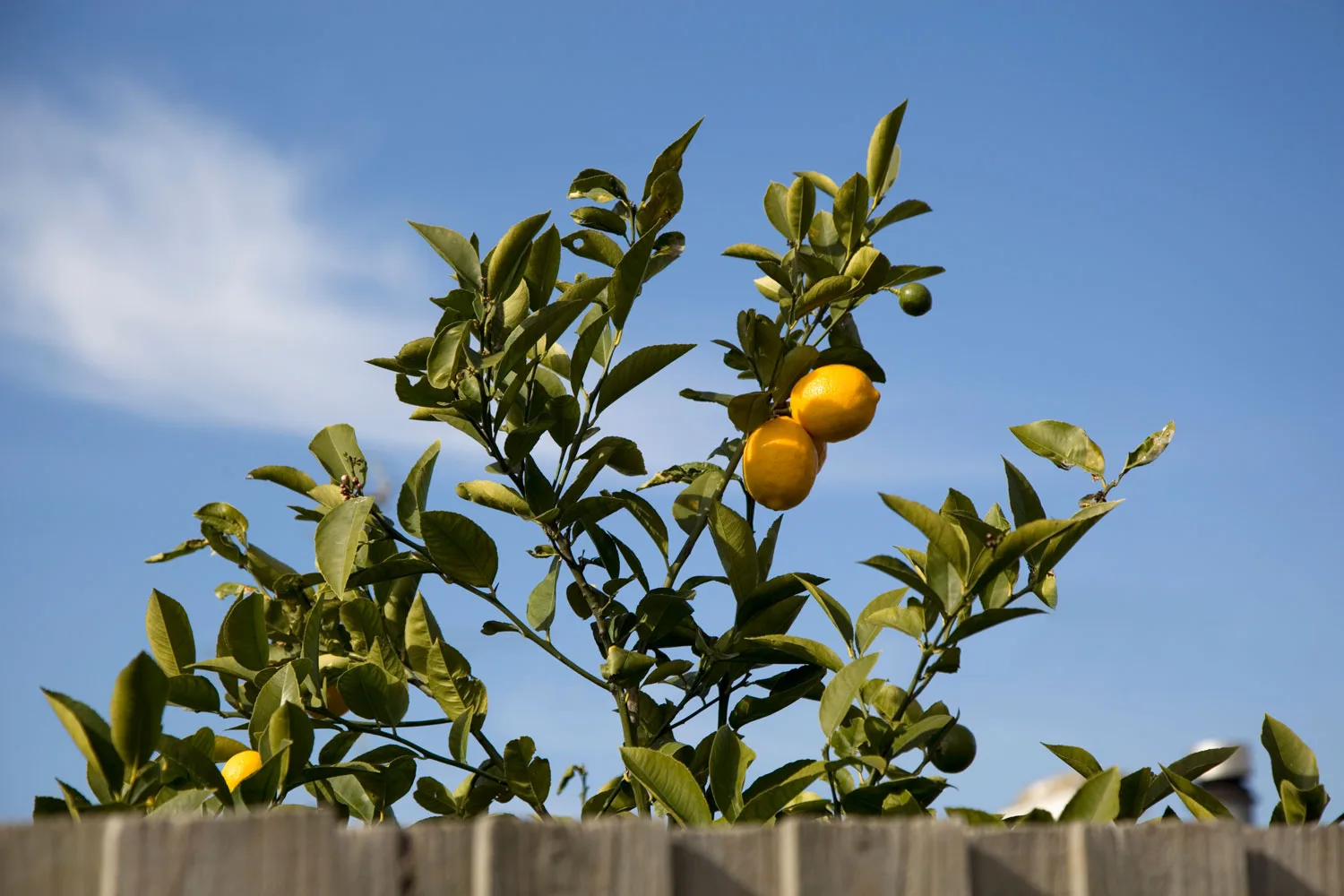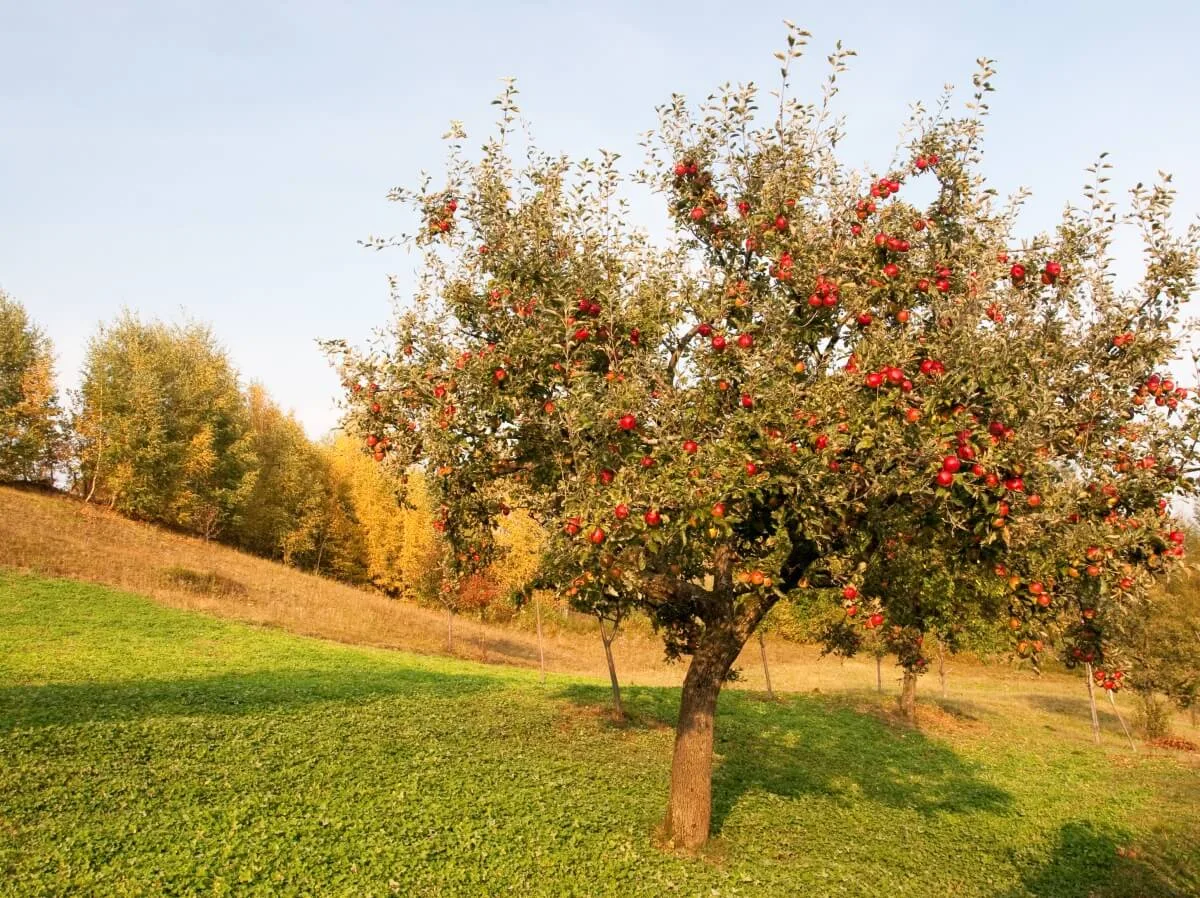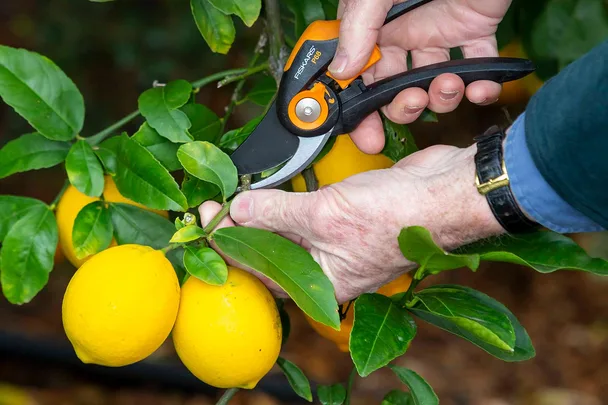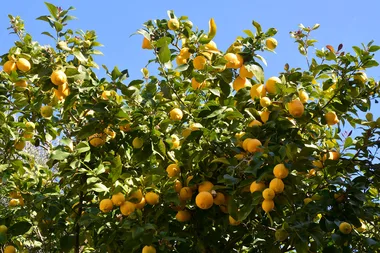Big, beautiful fruit trees don’t just happen overnight – they take years to cultivate through the art of pruning. Fruit tree pruning is an essential part of maintaining healthy plants and juicy fruits!
Giving them the occasional trim does wonders for their growth, sun absorption, and protection. In this guide, we’ll cover some of Australia’s most common fruit trees and the best ways to prune them.
How to prune fruit trees
When pruning fruit trees, make sure you prune flush against the branch or trunk at a forty-five-degree angle. Any uneven cuts or abrasions can gather moisture and rot or become infected.
1. Spring cleaning
Remove any deadwood, brittle branches, and damaged leaves. Getting rid of undesired clutter allows you to get a better look at your tree, making it easier to figure out what other parts need tending.
2. Cut back branches
Fruit trees have thick branches, but they can run into each other and cause damage. Give your main branches lots of room by pruning off the ones that might cross and cause trouble down the road.
3. Trim out sprouts
Prune away any small leafy growths, waterspouts, and suckers, since these take nutrients away from your fruit-bearing branches.
4. Topping & skirting
Remove any upper and lower growths to keep things even above and below. Topping refers to chopping off the top of the tree for easy access during harvest season.
Skirting describes the pruning of branches near the ground to take out underdeveloped parts of the tree that don’t get enough sunlight. This prevents soil contaminants, bugs, and fruit rot.
Why should you prune fruit trees?
If you want a fruitful harvest, you must familiarise yourself with pruning fruit trees!
-
Promotes health and growth: Pruning removes dead, diseased, or damaged branches, which helps improve the overall health of the tree. It also encourages new growth and enhances fruit production by allowing more sunlight and airflow into the canopy.
-
Controls size and shape: Regular pruning helps control the size and shape of the tree, making it easier to manage and harvest fruit. It prevents overcrowding and ensures that branches are evenly distributed, reducing the risk of breakage under the weight of fruit.
-
Increases fruit quality: Pruning encourages the development of stronger branches and redirects the tree’s energy towards fruit production. This results in larger, healthier fruits with better flavour and colour.
-
Prevents pest and disease problems: Removing dead or diseased branches reduces the risk of pest infestations and fungal diseases. Pruning also allows for better tree inspection, making it easier to detect and address any potential issues early on.

Check out this video for some tips.
When is the best time to prune a fruit tree?
A common mistake people make is pruning their fruit trees at the wrong time.
Speaking to ABC Talkback gardening expert Jon Lamb, South Australian horticulturalist John Stevens says the best time to prune your fruit trees is right after harvest.
John explains that you will have less fruit next year if you neglect to prune your fruit trees after the last fruit has fallen or is picked.
“After harvest, the trees think I’ve done my bit. I’ve produced fruit with seeds and will start producing all of this new wispy growth,” says John.
“That long, wispy growth takes off like a rocket almost immediately and will never produce fruit, at least not in the short term. The tree then puts its energy into this wispy growth at the expense of starting to fatten up new fruit buds for next year.”
Be careful not to hack at your tree, though.
“Just cut back the long wispy growth, then start thinking about immediately feeding your tree and ensure you keep the water up and weeds away. What you are now doing is you are ensuring you get a good crop of fruit next year because it produces all these new fruit buds.”
Pruning tools
Make sure your gardening tools are sharp and sterilised in a diluted mixture of hydrogen peroxide and water before use. This saves you from spreading diseases from contaminated parts of the plant. You need some basic tools to get started:
- Gloves
- Pruning shears
- Loppers
- Handheld saw
- Ladder


Fruit tree pruning structures
To give your tree the structure it needs, you can choose from three different pruning shapes. They vary depending on the fruit tree you’re growing, but it’s also up to your preference! Pruning balances everything out by making sure you don’t have too many branches since that results in smaller fruits.
Check out this video for a demonstration.
Natural
Some fruit trees require minimal pruning and can get a little wild. This doesn’t mean that you can skip the pruning routine altogether, but these varieties are a lot more forgiving if you miss a session or two.
- Lemon tree
- Mandarin trees
- Orange trees
- Fig trees
- Lime tree
Before: The lemon tree is bushy and untamed with heavy fruits.

After: There is overall balanced weight and structure to the lemon trees.

Open centre
The open centre structure system looks like a vase, keeping the centre of the tree as clear as possible. You start by pruning a young fruit tree at its main trunk but maintaining the ones that surround it, giving more open space to the central part of the tree.
- Apricot trees
- Nectarine trees
- Peach trees
- Plum trees
- Olive trees
Before: The apricot trees have too much foliage at the top with uneven branches and low-hanging fruit.

After: The tree has more support and the inner canopy can enjoy an equal amount of sunlight!

Central leader
This requires a central framework where the most growth is at the trunk of the tree, growing upwards in a balanced fashion. Make sure the branches have lots of space so they have enough room to expand as they age.
- Apple trees
- Cherry trees
- Mango trees
- Mulberry trees
- Avocado trees
- Pear trees
Before: The apple tree is going in many different directions and the branches are out of reach.

After: The tree has more support with an equal amount of foliage that reaches upwards.

Fruit trees are relatively easy to care for as long as you prune them early on. Now that you know what type of structures are best, it’s time to get to work! Whether you’re just starting out or you have an orchard full of fruit trees, don’t be afraid to cut things back! Put our pruning pro-tips to good use and enjoy the sweet fruits of your labour!
How to grow avocado: Growing an avocado tree










